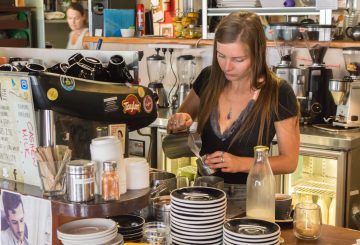뉴질랜드 영양사는 세계보건기구 (WHO) 의 2세 미만 아동을 위한 글로벌 급식 지침의 최근 업데이트에 대한 응답으로 영아 수유에 관한 현행 지침을 명확히 하기 위한 성명서를 발표했습니다.
2021년에 업데이트된 뉴질랜드의 영아 수유 지침은 영양가 있는 식단과 함께 처음 6개월 동안은 단독 모유 수유를 하고 최대 2년 이상까지 모유 수유를 계속할 것을 권장합니다.모유 수유가 불가능한 경우, 0-6개월 아기에게는 상업용 유아용 조제분유를, 6-12개월 아기에게는 후속 조제분유를 권장합니다.
뉴질랜드 영양사는 많은 부모들이 특히 식비를 결정할 때 직면하는 재정적 어려움을 잘 알고 있습니다.하지만 부모들에게 유아용 조제분유를 젖소 분유로 바꾸기 전에 몇 가지 주요 요소를 고려하라고 조언합니다.
이러한 요인 중 하나는 철분 결핍 빈혈의 위험입니다.많은 아기들이 선천적으로 철분 저장량이 적으며, 생후 첫 해에 빈혈이 생길 수 있습니다.이 위험은 산모가 임신 중에 철분 결핍을 겪었거나 아기가 조산한 경우 더 높습니다.상업용 유아용 조제분유에는 철분이 강화되어 있지만 젖소는 그렇지 않습니다.
또 다른 고려 사항은 젖소 우유가 아기의 신장에 미치는 영향입니다.아기의 신장은 태어날 때는 미성숙하고 첫해에 성숙합니다.젖소에는 신장에 스트레스를 줄 수 있는 단백질과 미네랄이 많이 함유되어 있습니다.
뉴질랜드 영양사는 생후 6개월부터 영아용 조제분유를 젖소로 바꾸기 전에 Well Child Provider 또는 GP와 상의할 것을 권장합니다. 영아마다 특성이 다르며 개별적인 관리가 필요하기 때문입니다.
개인 맞춤형 영양 조언이 필요한 경우, 부모는 공인 영양사와 상담하는 것이 좋습니다.자세한 내용은 뉴질랜드 영양사 웹사이트 www.dietitians.org.nz에서 확인할 수 있습니다.






























































